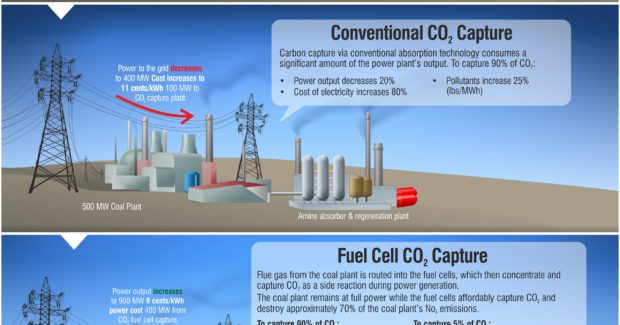The Future of Oil: The View from Right Now
Because the world as we know it is still mostly built on the trapped sunshine that is oil, the oil industry was the most consequential market of the 20th century. Guest columnist Chet Biliyok of Energy and System Technical analyzes how the industry must now step up to the challenges of this century.
Posted: January 25, 2017
Last November, Christmas came early for the oil industry: the one-two punch of the OPEC agreement to cut oil production, followed closely by an agreement with other oil producing nations, lifted oil prices by 20 percent to levels not seen since mid-2015. As the market adjusts to this, it is important to step back, soberly reflect on the big picture, and avoid being bogged down in the minutia of the oil market. As this is being written, the impact of these agreements still reverberates through the industry and the strength of the dollar is muddling up a sustained price recovery. On balance, the combined cuts of 1.8 million barrels per day (bpd) are deep enough to wipe off the supply glut that has hampered the market. If these cuts (scheduled to begin on January 1) are strictly enforced, the growing consensus is that the market should rebalance sometime in 2017, with global oil supply matching global oil demand.
It is possible that the market will flip from a glut to a deficit, a view strongly pushed by the International Energy Agency (IEA; Paris, France), but the price rally is unlikely to go far since the third part of the supply-demand equation – oil storage – will take on increasing significance. Although inventory levels in industrialized nations have been dropping since last August, crude and refined oil levels remain 300 million barrels above their five-year average and drawdowns will accelerate with decreasing supply to dampen a price recovery. Such concerns have led to somewhat conservative forecasts predicting that oil prices will reach $70 per barrel by the end of 2017.
On the supply side of the equation, the agreements leave the door open to producers not participating in the cuts, such as Nigeria and Libya, two OPEC members that have been exempted to allow them to restore production lost to internal strife. As they take steps to boost production, together they can potentially add another one million bpd to the market – but daunting political challenges must first be resolved. This means North American producers are poised to rip enormous gains from the production cuts. U.S. rig count bottomed out last May and the number of rigs returning to the oil patch will quicken, especially in the Permian Basin, if prices continue to hover above $50 per barrel.
Also in play are 5,000 drilled but uncompleted wells (DUCs), an amount that is 2.5 times the average in leaner years. These DUCs can potentially be brought online within weeks, as opposed to the typical six months’ completion timeframe for such wells. Still, completion rates are likely to be constrained by the availability of workers because the industry has lost a quarter million jobs – many workers moved away from the oil patch for employment in other industries. Companies that cut their headcounts too quickly and too deeply must now bear the burden of labor scarcity that will hamper their ability to take advantage of the impending bonanza. Under these conditions, the U.S. Energy Information Administration (EIA; Washington, DC) still predicts that about 400,000 bpd will be added to U.S. production in 2017.
On the demand side, the IEA recently upped its demand growth forecast for 2017 to 1.3 million bpd with revised estimates for Russian and Chinese demand. However, this appears to be optimistic because Chinese demand is expected to begin to taper off in 2017 as China reaches the capacity limits of their strategic reserves after taking advantage of low prices to fill up. They are also moving to regulate the teapot refineries that thrived in the low oil price climate, a situation that will also hinder demand. Depressed Chinese demand, combined with excessive inventory levels and exempt producers adding significant supplies to the market, will collectively stall price recovery.
Prices will largely remain flat unless there is a major supply disruption. President Trump pulling the U.S. out of the Iran nuclear deal and re-imposing sanctions could bring about such a disruption, but this is improbable because other signatories to that deal – such as Russia and the EU – are unlikely to go along. In fact, Total SA (Courbevoie, France) and Royal Dutch Shell (The Hague, Netherlands) recently signed agreements with Iran to pave the road for future developments of Iranian oilfields. So in the short term, expect a new ceiling to be established for oil prices.
In the long term, the gathering storm of climate change casts an ominous shadow on the industry. If the world continues to consume fossil fuels as currently projected, then the carbon budget that will limit temperature rise by 1.5 deg C will be spent by 2030. The atmospheric concentration of CO2 has permanently crossed the psychologically significant barrier of 400 ppm, with 450 ppm identified as the point at which temperature rise will exceed 2 deg C – and a point of no return for the climate. Of immediate concern is the fact that arctic temperatures have increased at twice the rate of global temperatures in recent years, with ice coverage last November being 18 percent below the 1981-2010 average, a situation that appears to be affecting weather patterns globally.
Consequently, the world is beginning to take the threat of climate change seriously. The Paris agreement, which will track the intended national contributions to emission cuts of signatory nations, came into force in October – faster than any international agreement of its scale. To reduce their addiction to fossil fuels and cut emissions, many countries are relying on efficiency gains and the deployment of renewable and nuclear energy. Increasingly, oil companies are sitting up to take notice of this changing energy landscape because they risk ending up with stranded assets: at the beginning of last November, ten of the biggest global oil producers joined forces to announce a $1 billion fund to invest in carbon capture technologies and energy efficiency over ten years. Many consider this level of investment to be a drop in a bucket, but it is still a start.
Exxon Mobil Corporation (Irving, TX) also invested in carbon capture technology, lending their expertise to a process that relies on fuel cells to capture carbon emissions from power plants. Shell has a portfolio of carbon capture investments and recently announced that their Quest project in Canada had stored one million tons of CO2 in its first year of operation – equal to emissions from 250,000 cars. Deploying carbon capture technology would allow the oil industry to capture and store carbon emissions, freeing up potential stranded assets and unlocking what otherwise would become unburnable carbon.
Oil must increasingly compete with other energy sources. European majors like Shell have even voiced their support for a carbon tax, a move that will pile more pressure on coal, the dirtier fuel. Coal is facing assaults from multiple directions, not just environmental pressures, but also economic challenges. The costs of utility-scale solar have dropped to levels making it the cheapest source of electricity in many locations. The cost of solar and other renewables keep falling, and so much renewables has been recently added to the global grid that renewable capacity now surpasses coal capacity on the grid. Even China is now reining in coal production both as a climate change mitigation measure and, more urgently, as a response to the choking air pollution in its cities. The election of Donald Trump, an avowed friend to the U.S. fossil fuel industry, will bring little relief to the coal industry in America. Cheap and abundant shale gas has been coal’s biggest opponent, and federal action that supports all fossil fuels will only result in more pain for coal.
The most significant long-term challenge to oil and other fossil fuels is the action of capital markets that are beginning to take significant steps to negatively impact the bottom line of the oil industry in the long run: BlackRock, Inc. (New York, NY), the world’s largest private investment firm with $4.9 trillion in assets, reported last September that they would begin to price the risks of climate change in their investment portfolio. Bill Gates partnered with a handful of other highly accomplished businessmen to announce the Breakthrough Energy Venture Fund, a $1 billion investment fund to commercialize game-changing clean energy technology – a process that has already failed many times before. The key difference here is that these investors require no immediate returns and appear to be in it for the long run, even though there is no guarantee of success.
The oil industry still has a trump card to play, because about half of oil consumption goes to other uses besides energy. Until man can reliably harness biological sources as a substitute for petrochemicals and chemical feedstocks, oil will still be required – though at greatly reduced quantities.
The medium term is where things get interesting. Many companies have weathered the storm of the past couple of years through efficiency gains, hedging and cutting headcount. Consolidations, such as the one between GE Oil & Gas (London, England) and Baker Hughes Inc. (Houston, TX), have helped shape recent conventional wisdom that the industry is gearing up for a recovery. Multinationals like Chevron Corporation (San Ramon, CA) and BP plc (London, England) recently gave the go-ahead to megaprojects. Canadian producers Cenovus Energy Inc. (Calgary, AB) and Canadian Natural Resources Limited (Calgary, AB) recently approved spending for the first time since 2014, expecting to add a combined 90 thousand bpd by 2020.
Amid this optimism, Shell predicted that oil demand could peak in 5-15 years due to efficiency gains, particularly in OECD (Organization for Economic Cooperation and Development) countries, where oil consumption is 9 percent lower than 2005 levels in a continuing trend that will largely offset demand growth from emerging nations. Oil is also about to lose its monopoly as the go-to energy source in the transport sector as the automobile industry evolves toward electric vehicles (EVs). Every major car manufacturer is developing or has developed an electric model to launch production within the next five years. EVs currently make up about one percent of the global automobile fleet and demand is low. But with buyers having many options to pick from in five years and next-generation EVs achieving 200 miles on a single charge (making range anxiety outdated), the age of the EV is dawning.
In the U.S., the first mass market 200-miles-on-single-charge EV, General Motor’s Bolt, began shipping with mostly positive reviews and will soon be followed by Tesla’s Model 3. These EVs are supported by 30,000 public charging stations throughout the country, compared to 90,000 public fuel stations. The price of EVs is forecasted to fall in the coming years as battery costs quickly drop and competition becomes fierce with more models being introduced to the market. Diesel-powered vehicles are expected to take the brunt of the assault from EVs, but refineries that invested heavily in producing diesel do not seem bothered because they see an increasing need for it in trucks and ships. However, electric trucks are already being trialed by Daimler (Mercedes-Benz), and additional models were announced by Nikola and Tesla Motor Companies.
In shipping, European emission regulations are driving the switch from fuel oil to diesel, but LNG (liquefied natural gas) is a viable alternative as other applications for it are being explored due to global LNG overcapacity. Even oil-derived aviation fuel has biofuel challenging its dominance, although a sustainable supply of the fuel in the required volumes is at least a decade away.
EVs get strong regulatory support beyond the U.S., particularly in Europe. Germany’s Bundesrat (Federal Council) passed a resolution to ban the internal combustion engine starting in 2030, but it is unclear how such a proposal will work. The UK quietly views EVs as an opportunity to rebuild their manufacturing base as they pivot away from Brexit. Tesla is also on the hunt for a suitable location in Europe to build a second Giga factory and has received invitations to set up shop from the governments of the Czech Republic, the Netherlands and Portugal, among others. For the roll-out of expanded EV models, BMW, Daimler, Ford and Volkswagen Group (with Audi and Porsche) are collaborating to install an ultra-fast charging network along critical highways around Europe.
EVs are poised to make their biggest splash in emerging nations, similar to the way fixed telecom lines were bypassed for a direct move to mobile. China is the largest market for EVs. Dealing with massive air pollution problems in major cities, they have the structure in place and an urgent public health incentive to expand EV penetration. The prediction of oil demand in emerging nations and the impact of technology-driven innovations like ride-sharing services and autonomous vehicles are the sticking points that have led to a divergence in outlook between automakers and the oil industry. Some automakers envision that up to 40 percent of cars sold in the mid-2020s will be EVs, while oil companies predict that EVs will make up less than 10 percent of the global fleet by 2035. It will be costly to whichever side ends up being the loser in this debate.
In conclusion, the oil industry faces a straight race between a supply shortfall borne out of deferred investments and declining demand fueled primarily by accelerated EV penetration. The supply shortfall will win out, leading to one last boom for the industry that will be followed by a slow and inescapable decline. Carbon capture technologies hold the promise of continued consumption of fossil fuels while also limiting carbon emissions. But this increasingly appears to be of secondary importance, because apart from its petrochemical uses, oil must compete directly with other sources of energy. Major oil producers are taking varying degrees of steps to withstand the impending onslaught: Exxon Mobil has invested in fuel cell technology for carbon capture, Shell shifted their focus to gas while also maintaining a carbon capture portfolio, and Total restructured to become an integrated energy company. Others fall somewhere in between or are ignoring the imminent threat.
Services companies, technology providers and equipment manufacturers must take bets to stake a claim for themselves in this changing landscape. One area that is ripe for investment is energy storage. Beyond batteries, other storage technologies, such as compressed air and cryogenic air storage, can work with specialist expertise gleaned from the oil industry to smoothen out supply and demand in the electricity markets. On grids that take on more solar and wind capacity, energy storage will be required to provide energy at night and when the wind is not blowing. Because the world as we know it is still mostly built on the trapped sunshine that is oil, the oil industry was the most consequential market of the 20th century. Now it should and must step up to the challenges of this century.















